 September 2013 Tank of the Month
September 2013 Tank of the Month
September 2013 Tank of the Month
Robert Chu's (Santoki) 75 US-Gallon Reef Aquarium
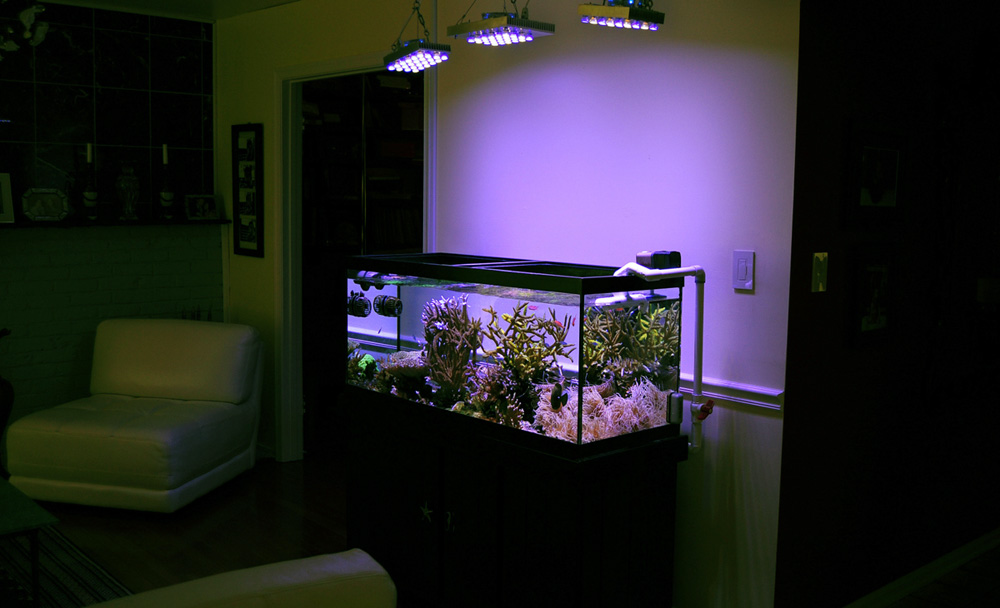 |
Introduction & Background
First off, I'd like to thank Reef Keeping Magazine, and the Reef Central community for giving me the opportunity to share my reef. I feel very lucky to have been selected amongst the many amazing and admirable tanks from around the world. It would be an understatement to say that the various hobbyists here on RC have influenced my current approach to reefkeeping. From the first Starboard bare bottom tank to the first homemade LED only tank, I have witnessed many truly innovative approaches that have helped make what reefkeeping is today. Without all the members of the community sharing their ideas and experiences, many of us wouldn't be where we are today. Like most of you, I've always been fascinated by aquatic life. Unlike life on land, there is something magical about the ability to traverse in three dimensions, in this clear liquid we call water. It seems that you either get it, or you don't. I can't tell you how many times we have had guests over that barely notice the tank, while the occasional one can't stop marveling. At RC, we all marvel!
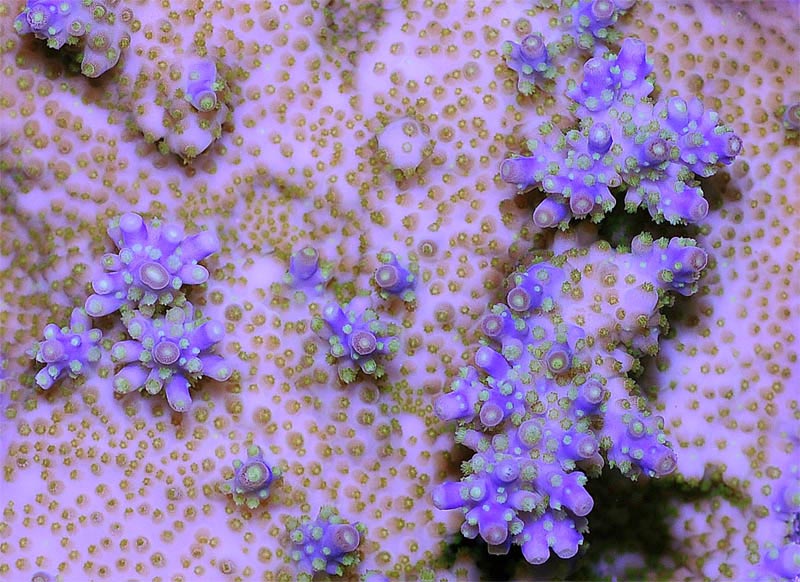 |
Current System
The display is a US standard 75 gallon (48" x 18" x 20") plumbed into a 100 gallon Rubbermaid sump located in the basement one floor below. When I designed the setup originally, I had glass cut for a custom overflow. It has been roughly 5 years and I am still using the same strainers for the two 1.5" bulkhead drains. For some reason, I never saw the need for the overflow box. This also frees up needed real-estate in the relatively small tank. Display corals sit on top of a few 1' x 1' marble tiles I had laying around at the time. In hindsight, I would have preferred something white, as it would have reflected more light. Although it would have become covered with algae eventually, there are organisms that constantly scrape at it, exposing the under layer. Return from the basement is provided by a Panworld 100PX. Auto top-off is accomplished with a SpectraPure UPLC via pressure sensitive switch. Despite the large amount of water movement in the sump, the switch seems to be doing a good job of keeping water level steady. Only straight RODI water is used for top-off.
System Profile
• Display tank: 75 gallon aquarium
• Display Lighting: 3 Pendants, each have 24 Cree XR-E emitters; 12 white and 12 blue with 40 degree optics
• Skimmer: ETSS 800 downdraft
• Refugium / Frag Tank: 100 US gallon Rubbermaid
• Return Pump: Panworld 100PX
• Filtration Media: 1/3 cup ROX carbon every three weeks
Water Movement
Water movement in the display is provided by two MP40s. The return is tee'd off and provides some flow to the opposite side of the display. Someday in the future, I hope to employ an upstairs Carlson surge box to further minimize the need for equipment in the display. In keeping with the barebottom philosophy, three Tunzes keep sump detritus in suspension and also provide flow to the grow-out rack located in the upper portion of the sump.
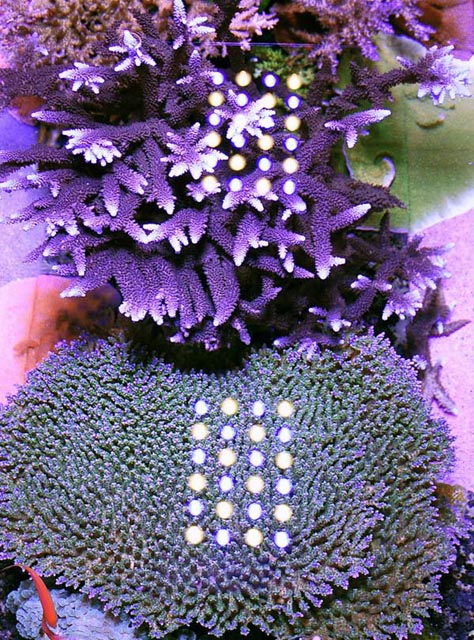 |
Filtration
Waste removal is accomplished via wet skimming by a large (relative to total system volume) downdraft skimmer. A Panworld 150PX powers the ETSS 800 downdraft skimmer located in the sump room. Around 1 liter of light skimmate is removed daily. In keeping with the original concept of simplicity and ease of maintenance, activated carbon is the only chemical filtration used. 1/3 cup of ROX activated carbon is used every 3 weeks to prevent yellowing of water. For the first year or so, I had resisted carbon use, but decided that the benefits far outweigh the negatives. 20% of the system water is changed roughly once every 3 weeks as well, though not at the same time as the activated carbon. I use Instant Ocean, adjusted for magnesium and calcium. Specific gravity is kept between 1.026-1.027. Alkalinity is kept around 7.2-8.3dKH and calcium is 430-450ppm. Magnesium stays around 1450ppm. It has been so long, I really don't know how much live rock lives in this system. If I had to guess, I would say around 60 pounds or so. Over the years, I've removed rock from the display to allow corals more room to grow. Currently only 3 pieces totaling no more than 5 pounds reside in the display. The rest sit in the sump.
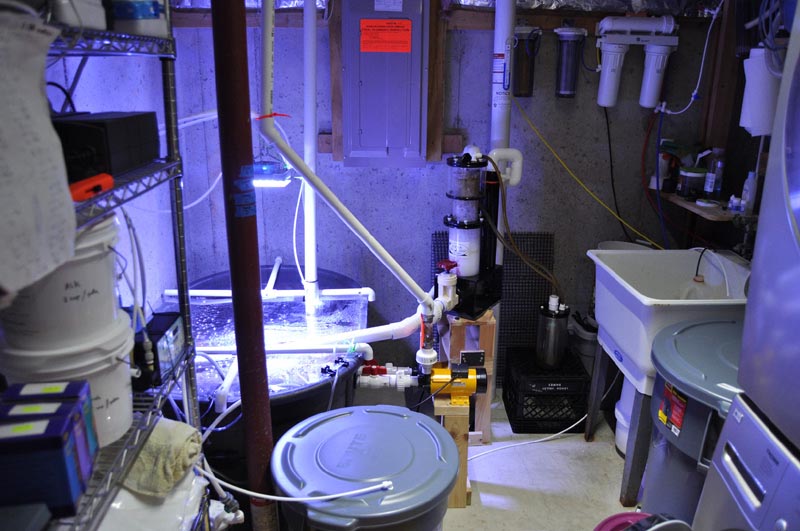 |
Water Chemistry
If I had to prioritize all the various factors which are crucial to success in a reef tank, water chemistry stability would be the first on the list. However, there seem to be so many variables that can have an effect on water chemistry. A simple retardation of growth in a large colony can send alkalinity levels shooting up within a matter of days. What causes growth to slow or stop can be anything which exposes the coral to rapid change. These consumption changes, in turn feed into a chain of events which require careful and routine monitoring in efforts to stabilize. Once stabilized, it can take another month or two before everything is back on track and corals begin showing growth and improved colors. Water chemistry is managed by a Litermeter3. I can adjust alkalinity, calcium, and magnesium levels through use of the 3 separate pump heads. Unforeseen events such as a fairly recent heater explosion caused growth to stop in nearly all colonies. Fortunately, levels were relatively easy to adjust once daily monitoring was put in place. Once stability is achieved, it is very easy to become complacent and let it all run on auto-pilot. For this reason, I perform water tests at least once every month regardless of how everything looks.
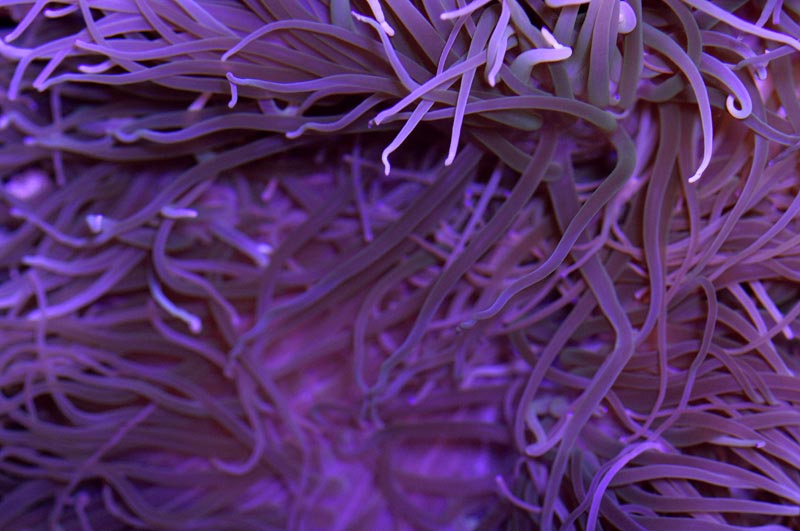 |
Lighting
The display is lit using three separate LED pendants. I built the first one initially as an experiment. However, after the first week the prototype was in service, I was ready to go all out and built the remaining two shortly after. Each unit consists of 24 Cree XR-E emitters. 12 white and 12 blue. 40 degree optics were used to facilitate higher mounting of the lights, which enable easy top down viewing. Each pendant hangs roughly 4 feet from the tank bottom. An Arduino controller was added to simulate sunrise/sunset around 2 years ago. While it added more control, I don't think it necessary, nor did it contribute much to the overall health of the corals or the aesthetics of the setup. I had experimented with supplemental LED emitters years prior, using them only to provide actinic viewing. While the aesthetics were nice, output from the standard capsule shaped diodes were child's play compared to the new Cree emitters measured in watts! The lights are on 13 hours a day. For 4 hours around midday, the lights are driven at 100%. The rest of the 9 hours are divided between sunrise and sunset. All pendant units have been in service since the end of 2009. Finally, for the LED aficionados out there, the emitters used in this build are the older Cree XR-Es driven between 700mA-730mA. They have been reliable, as I have not experienced any emitter failures to date.
Pests
In the more than 6 years this particular system has been set up, I've dealt with pests such as Monitpora eating nudibrachs, amphipods which seem to feed on acroporas (AKA redbugs), and one single aptasia. Fortunately, I've never experienced the dreaded acropora eating flatworms. The experience of others dealing with these pests caused me to make a decision which I feel played a crucial role in this reef's success. After the first initial year, I had gathered more than 20 different species of coral frags, 16 of which were SPS. I decided that I would be satisfied if I could get just a handful to grow into large colonies. I made the decision that I would not acquire any new specimens no matter how alluring, for as long as this system was operating. Doing so also had the benefit of reducing possible variables or excuses for failure. In short, this tank has not had any outside coral introduction in more than 5 years.
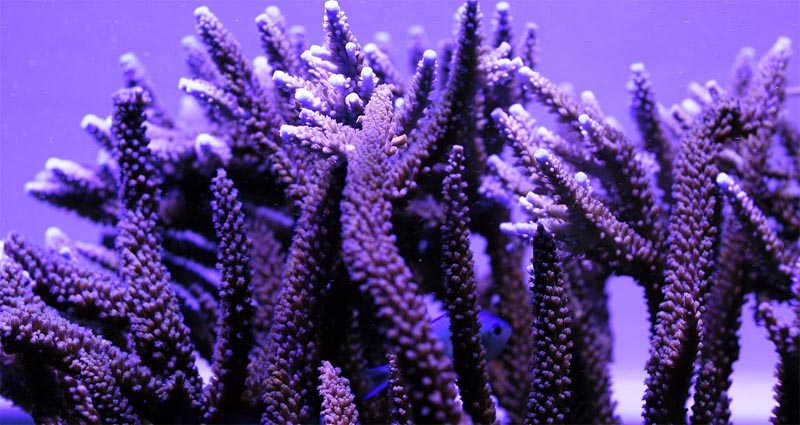 |
Spawning
In November of 2012, I happened to be awake later than normal and witnessed a spawning event in the larger A. Formosa colony occupying the left side of the display. The areas involved in this activity were the largest and thickest branches of the colony. Other spawning residents include, the A. perideraion AKA Pink Skunk clowns, which spawn every 10-14 days. I was also fortunate enough to witness an Astrea snail releasing tiny bright blue eggs from right above the water surface. None seem to have made it past the larval stage however. Of all the regular spawners in this system, the Heteractis Crispa spawning event is something which differs from the rest because it causes much havoc. The male Crispa has so far spawned once every year. At 16 inches across, its sperm release causes the skimmer to stop working for days, even after a large water change. Even though it has been almost 3 years since I've directly fed the anemone, it still seems to gain enough resources to spawn.
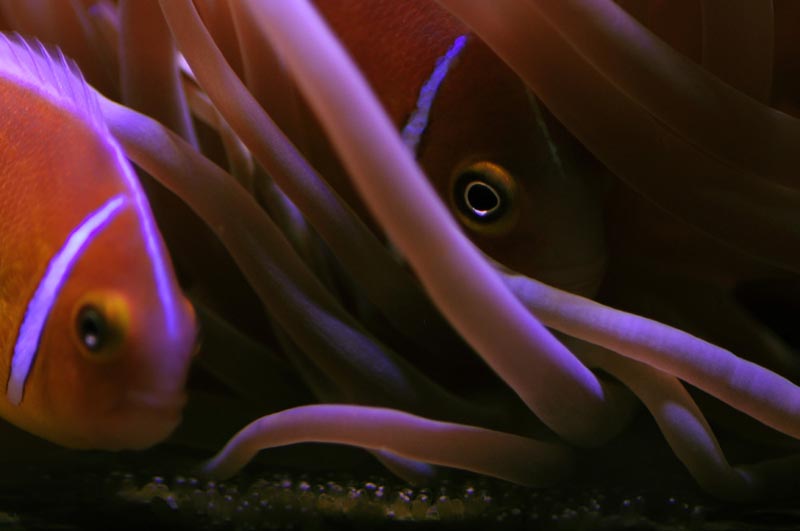 |
Future
As of this writing, I feel that the current display is quite overgrown. I personally prefer to have more open spaces in the substrate, as well as the water column. An up-size will not be possible in the current home due to architectural layout. If however, things change, I have plans to design a system incorporating a longer display to allow for empty spaces in between coral heads.
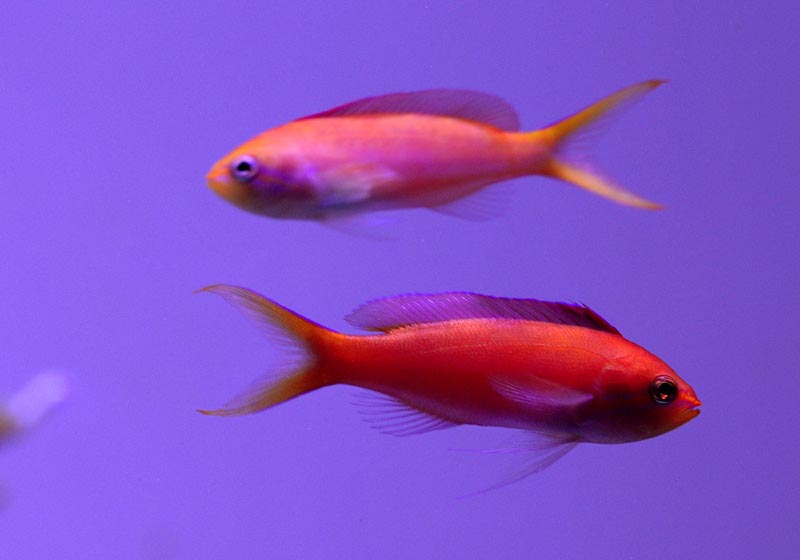 |
Acknowledgment
Regardless of how original any approach or idea in this hobby may be, it is the world community that shapes the hobby as we know it today. Besides RC, I am fortunate to have WAMAS, a very active local reefing club. Members share ideas and are willing to help at the drop of a hat. Finally, I am lucky to be married to someone who truly appreciates the end result, even if that means I am missing for hours at a time in the basement she calls the black hole. It wouldn't be the same, without her to share it with!
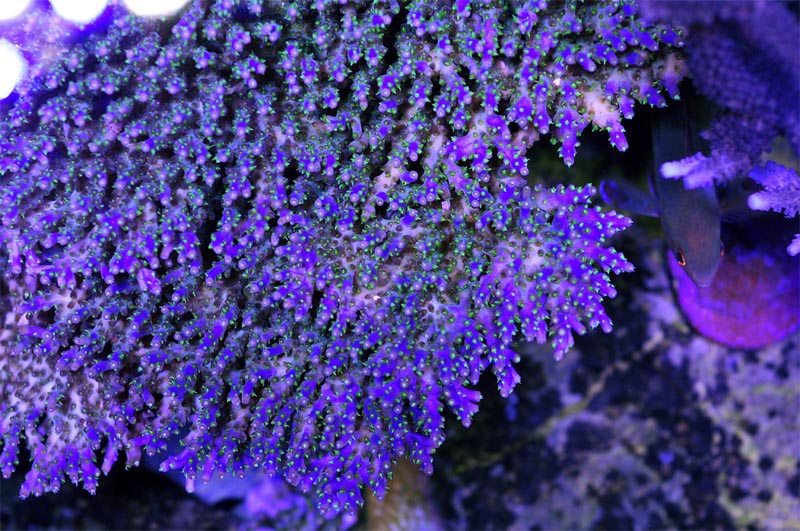 |
Feel free to comment or ask questions about my tank in the Tank of the Month thread on Reef Central.



